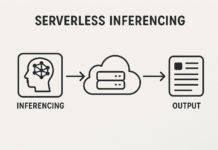Introduction
C is one of the most widely used programming languages, known for its efficiency, flexibility, and powerful features. Developed in the early 1970s by Dennis Ritchie at Bell Labs, C has become the foundation for many modern programming languages, including C++, Java, and Python. Despite the emergence of many new languages, C remains relevant due to its speed, simplicity, and direct control over hardware. This article provides an in-depth understanding of C, its features, applications, advantages, and why it continues to be an essential skill for programmers.
What is C Language?
C is a general-purpose, procedural programming language that allows direct access to memory, making it highly efficient for system programming, embedded systems, and application development. C is known for its structured programming capabilities, portability, and minimal runtime support, making it a preferred choice for developers worldwide.
C serves as the backbone of many modern computing systems, from operating systems to compilers, databases, and game development engines. Understanding C provides a strong foundation for mastering other high-level programming languages, as many of them inherit C’s syntax and structure.
Features of C Language
C offers several key features that contribute to its widespread adoption:
- Simple and Efficient – C provides straightforward syntax and powerful functionality, making it easy to learn and implement.
- Portability – C programs can run on different hardware and operating systems with minimal modifications.
- Structured Programming – C supports modular programming, allowing developers to break programs into small, manageable functions.
- Rich Library Functions – It offers a vast standard library with built-in functions for mathematical and system operations.
- Memory Management – C provides direct memory manipulation using pointers, allowing efficient resource allocation.
- Fast Execution – Since C is closer to machine language, it executes faster than most high-level languages.
- Extensibility – C allows developers to create user-defined functions, enhancing reusability and modularity.
- Low-Level Access – Unlike many high-level languages, C allows bitwise manipulation and direct hardware access.
These features make C an ideal language for both system-level and application-level programming.
Applications of C Language
C is widely used in various fields of computing. Some of its primary applications include:
- Operating Systems – C is the core language used in developing operating systems like Windows, UNIX, and Linux.
- Embedded Systems – Many microcontrollers and embedded devices run on C programs.
- Compilers and Interpreters – Various programming language compilers, such as GCC, are written in C.
- Database Systems – MySQL, one of the most popular database management systems, is written in C.
- Game Development – C is used to develop high-performance gaming engines.
- Networking – Many networking protocols and applications are implemented in C.
- Scientific and Engineering Applications – C is used in simulations, mathematical computations, and graphics applications.
- IoT (Internet of Things) – Many IoT devices rely on C for efficient performance and hardware control.
Basic Syntax of C Language
Every C program consists of essential components:
- Preprocessor Directives – Instructions processed before compilation, such as
#include<stdio.h>. - main() Function – The entry point of a C program.
- Statements and Expressions – The code that performs operations.
- Control Statements –
if,else,for,while, andswitchfor decision-making and loops. - Functions – Blocks of code that perform specific tasks and improve modularity.
Example of a Simple C Program:
#include<stdio.h>
int main() {
printf("Hello, World!\n");
return 0;
}This basic program prints “Hello, World!” on the screen.
Understanding Data Types in C
C provides a variety of data types to handle different kinds of data:
- Integer (
int) – Used for whole numbers. - Floating Point (
float,double) – Used for decimal numbers. - Character (
char) – Used to store single characters. - Void (
void) – Used for functions that do not return a value. - Derived Data Types – Arrays, pointers, structures, and unions that allow more complex data handling.
Control Flow Statements in C
C provides various control flow statements that dictate how the program executes:
- Decision-Making Statements
if-elseswitch-case
- Looping Statements
forwhiledo-while
- Jump Statements
breakcontinuegotoreturn
These constructs help in making programs more dynamic and interactive.
Memory Management in C
Memory management is crucial in C programming and is done using:
malloc()– Allocates memory dynamically.calloc()– Allocates memory for an array dynamically.realloc()– Reallocates memory dynamically.free()– Deallocates memory.
Using these functions ensures efficient memory utilization and prevents memory leaks.
Why Learn C Language?
- Foundation for Other Languages – Learning C helps in understanding languages like C++, Java, and Python.
- System-Level Programming – It is used to build operating systems and hardware drivers.
- Job Opportunities – Many companies require C programming skills for software development roles.
- Performance and Efficiency – C is widely used in applications requiring high performance and resource optimization.
- Understanding Hardware – C provides direct hardware access, making it crucial for low-level programming.
Best Practices for Writing C Programs
To write efficient and maintainable C programs, follow these best practices:
- Use meaningful variable and function names.
- Follow proper indentation and formatting.
- Comment your code for better understanding.
- Avoid using
gotostatements to maintain structured programming. - Use memory management functions carefully to prevent leaks.
- Keep functions short and focused on a single task.
- Utilize header files for code modularity.
Conclusion
C language remains one of the most powerful and widely used programming languages. Its efficiency, portability, and structured approach make it an essential skill for programmers. Whether you are a beginner or an experienced developer, mastering C can open doors to numerous opportunities in software development and system programming. By learning C, you gain insights into how computers work at a fundamental level, making it an invaluable asset for any programmer.






















































